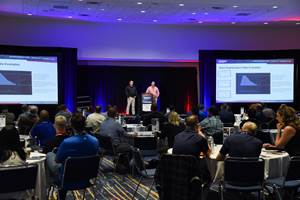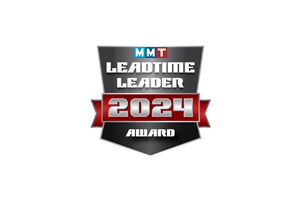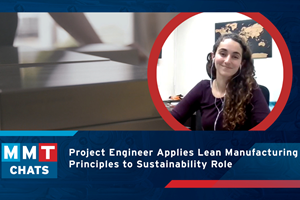Keeping Up with ISO: The Value of Value Stream Mapping
Most people find it difficult to translate quality into in real dollars and cents.
Most people find it difficult to translate quality into in real dollars and cents. However, they do realize that a lack of quality can cost millions of dollars in rework, scrap, recall or even liability lawsuits. ISO 9001:2015 helps improve a company’s financials by helping it determine how much quality costs. Eight quality-management principles that form the basis of the standard are: customer focus, leadership, involvement of people, process approach, systems approach to management, continual improvement, factual approach to decision-making and mutually beneficial supplier relationships. These help to articulate the importance of making quality an integral part of a manufacturer’s daily operations.
It is necessary that moldmakers’ and molders’ organizational elements be aligned, or else different parts of an operation will head in different directions. Fundamentally speaking, these organizational elements include processes, sourcing approach, infrastructure and people. Processes come first, because the overall purpose of operations is to deliver a service or product to customers, and this requires the right processes. Without understanding the processes we want, it’s hard to choose suppliers, build infrastructure or select people that consistently deliver. The highest level of a process is its value stream. A company needs to know its value streams as they are today, what it wants them to look like in the future and the gaps that need to be filled. Hence, for each department, the company needs a value stream map: a tool that analyzes and develops how a product or service is developed from its beginning through to the customer.
Measure Current Processes
Value stream clarity equals competencies in measurement. Simply put, without measurement, companies are in the dark. The first step after mapping your current processes is to measure them. These measures must address effectiveness (the extent the company is meeting customer needs to a defined level of quality), efficiency (how much it is costing the company to do so) and sustainability (the extent to which the company is burning out its people or infrastructure). No assessment is complete without at least a point-in-time assessment of performance, followed by continuous and real-time assessment. If a company knows its current processes and quantified performance, its future processes will be clear as well, as will the targets for performance.
The next step is for the company to decide which processes it will perform itself and which ones it will outsource. These decisions will drive an assessment of what a particular company can do better than anyone else at a given level of cost or what gives it a unique competitive advantage. Clarity of operational strategy is achieved once a company knows its future processes, measurable targets and processes to be performed in-house. Then the company has a platform on which to make decisions about people and systems.
Waste Elimination
Eliminating waste is the fastest way to improve performance, but first an organization has to find the waste and prioritize. It is recommended that moldmakers and molders first collect data on specific value streams in order to reduce waste and then develop the infrastructure and means to measure this data on an ongoing basis.
A value stream is the high level of activities that are conducted, generally sequentially, to provide a customer with an outcome. These activities can include, for example, product research, design, marketing, sales, fulfillment/installation and servicing. Processes such as product development or sales tend to be practically defined as specific parts of a value stream.
There are six essential methods of data collection for value streams or processes:
1. Collect the information that can be gleaned from available systems.
2. Conduct observations and timings of staff activity.
3. Conduct observations of the work item itself, such as following it through a manufacturing process.
4. Retrospectively review activity. For example, conduct a file review to find typical errors.
5. Run workshops with subject-matter experts in order to understand process flows and identify where things might go wrong.
6. Conduct deep dives on tasks and activities in a process that employees perform to get the job done.
Finally, the CEO/owner must know specifically when to use each of these data-collection methods, and he or she should be assured of access to competent personnel who can use the right approach. These days, the journey of data collection need not be a long one, given the development of modern tools and techniques, but there is still no alternative to good information as the basis of good decision-making. That goes as much for waste elimination as any other leadership consideration. Otherwise, it is exceptionally difficult to emerge from the fog of loose information and hearsay.
Related Content
MoldMaking Conference Session Spotlight: Data
Want to learn about digital workflows in mold design or ERP or global mold monitoring and asset management or the impact of tooling digitalization?
Read MoreFAQs: What Are the Leadtime Leader Awards?
Here are answers to some frequently asked questions about MoldMaking Technology's annual Leadtime Leader Awards competition.
Read MoreMMT Chats: Marketing’s Impact on Mold Manufacturing
Kelly Kasner, Director of Sales and Marketing for Michiana Global Mold (MGM) talks about the benefits her marketing and advertising, MGM’s China partnership and the next-generation skills gap. This episode is brought to you by ISCAR with New Ideas for Machining Intelligently.
Read MoreMMT Chats: Project Engineer Applies Lean Manufacturing Principles to Growing Sustainability Role
MoldMaking Technology Editorial Director Christina Fuges catches up with MMT’s 30-Under-30 Honoree Katherine Pistorius, who has added Regional Sustainability Coordinator alongside her Project Engineer duties, which demonstrates the many paths one can take in a manufacturing career. Here she shares how this opportunity unfolded for her and what the job entails today and in the future. This episode is brought to you by ISCAR with New Ideas for Machining Intelligently.
Read MoreRead Next
Keeping Up with ISO: A New High-Level Structure, Part 3
Here's a look at Clauses 7.0-10.0 in ISO 9001:2015.
Read MoreKeeping Up with ISO: A New High-Level Structure, Part 2
Here's a look at Clauses 4.0-6.0 in ISO 9001:2015.
Read MoreHow to Use Continuing Education to Remain Competitive in Moldmaking
Continued training helps moldmakers make tooling decisions and properly use the latest cutting tool to efficiently machine high-quality molds.
Read More















.jpg;maxWidth=300;quality=90)
_300x250 3.png;maxWidth=300;quality=90)








